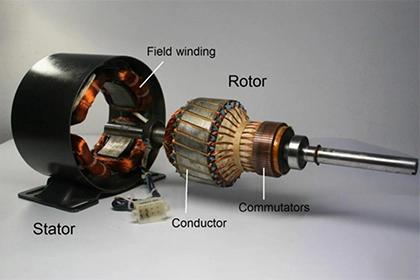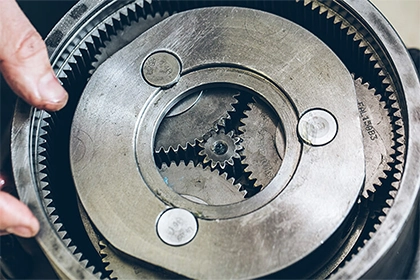
Why do motors get jammed?
Motors may get jammed due to various reasons such as a blocked or obstructed rotor, a damaged or worn-out bearing, or an overloaded or seized mechanism. It may also be due to issues with the power supply, such as low voltage or a faulty starter capacitor, or a problem with the motor's control system, such as a malfunctioning switch or relay.
Electric motors play a vital role in modern society, and their applications are found in a wide range of fields. They are widely used in industrial production, transportation, household appliances, renewable energy and other fields. However, one of the frequent problems with motors is that they seize up. In this article, we will explore the causes of motor jams, discussing the effects of mechanical factors, environmental influences and maintenance practices. By understanding the reasons behind motor jams, strategies can be implemented to minimize their occurrence and maintain optimal motor performance.
Mechanical factors
- Manufacturing defects
Despite strict quality control measures, manufacturing defects can still occur. Misaligned parts, poor machining and inadequate assembly can all lead to motor blockages. These defects can lead to uneven wear or increased friction, ultimately resulting in motors that do not spin smoothly. Lunyee's motors are manufactured with strict controls at all stages of the production process and have a series of specialized tests.
- Bearing failure
Bearings play a vital role in reducing friction and supporting rotating parts of motors. However, bearings can fail due to wear, improper installation, and other factors. This can lead to increased friction, misalignment, and even cause the motor to seize.
- Thermal expansion
When a motor is running, its components heat up and expand. If expansion is not properly considered in the design and manufacturing process, the motor's components may expand beyond their tolerances, causing them to bond and jam. Lunyee's motors are designed with systematic market research prior to motor design to minimize motor failures due to motor design issues.
Environmental impact
- Corrosion
Metal parts of motors exposed to moisture, chemicals or corrosive gases may become corroded. Corroded parts can become rough, leading to increased friction and wear, which, over time, can cause the motor to seize.
- 2. Contamination
Dust, dirt and other debris can enter the motor and accumulate on its internal components, causing increased friction and wear. If left unchecked, this can lead to motor components sticking and eventually jamming.
3. VibrationExcessive vibration can lead to premature wear and misalignment of motor components. This can lead to increased friction and, in extreme cases, to motor seizure.
Maintenance practices
- 1. Lubrication
Proper lubrication is critical to minimizing friction and wear within the motor. Inadequate or improper lubrication can lead to increased friction, heat, and eventually clogging of the motor.
2. OverloadSubjecting a motor to loads that exceed its rated capacity can lead to excessive wear and overheating, which can cause premature component failure. This can eventually cause the motor to seize.
3. Preventive maintenanceRegular preventive maintenance (e.g., inspections, cleaning and parts replacement) can help identify and resolve potential problems before they escalate and cause the motor to seize.
Conclusion
Motor jamming involves mechanical, environmental and maintenance-related causes. To minimize the risk of motor jamming, it is important to ensure proper design and manufacturing, protect motors from harsh environmental conditions, and adhere to a strict preventive maintenance program. By understanding the causes of motor jams and taking appropriate countermeasures, we can maintain optimal motor performance and extend the life of these vital machines.



Leave a Comment